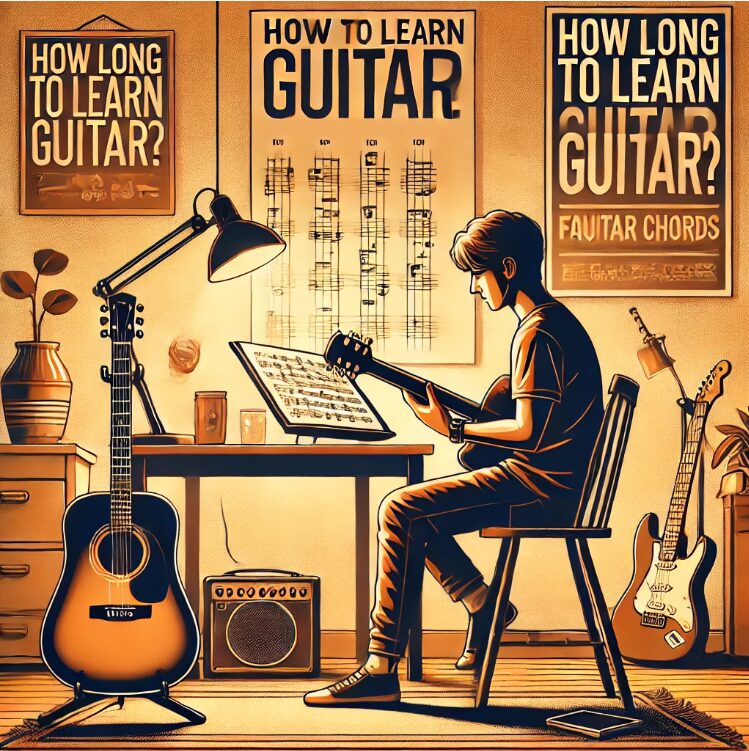Please login to bookmark
The “Karate Kid” Method: How “Wax On, Wax Off” Applies to Learning Guitar
If you’ve ever seen The Karate Kid, you’re familiar with the iconic “Wax On, Wax Off” scene. Young Daniel LaRusso, eager to learn karate, is instead put to work waxing cars, painting fences, and sanding floors by his mentor, Mr. Miyagi. These seemingly mundane tasks were transformative, as they secretly built the muscle memory and reflexes he would need for karate. What seemed like mundane chores turned out to be the foundation of his karate training. It’s a lesson in mastering the basics through repetition, discipline, and trust in the process.
Surprisingly, this method is not much different from how you learn to play guitar.
Building Muscle Memory Through Guitar Exercises
In the same way Daniel’s repetitive motions with “wax on, wax off” built muscle memory, so does practicing scales, chord transitions, and strumming patterns on the guitar. At first, it might feel tedious. Why spend so much time practicing switching between G and C chords, running through the same pentatonic scale, or performing repetitive finger exercises daily?? The answer is simple: repetition is the key to fluency.
Your fingers need to move without conscious thought, just like Daniel’s blocks and strikes became second nature after hours of repetitive motions. Foundational guitar exercises, like running through the following tabs, are excellent for building this muscle memory. Let’s explore a few exercises that tackle common beginner challenges while setting the stage for more advanced playing. They specifically address common beginner challenges, such as developing finger independence and navigating the fretboard. Finger exercises teach your fingers to move independently, reducing stiffness and increasing dexterity. Meanwhile, working through scale patterns helps you become more familiar with fretboard geography, allowing you to play with greater confidence and accuracy.
Exercise 1: Single String Picking
This simple exercise mirrors the “wax on” process. By using a “finger per fret” approach, where each finger is assigned to a specific fret (1, 2, 3, and 4) and all notes are played with downstrokes, you’re developing finger strength, coordination, and picking accuracy. Practicing this exercise systematically across all strings builds a strong foundation for more complex techniques.
Exercise 2: Chord Transitions
Practice transitioning between these chords with a steady rhythm. Each strum and transition builds the foundation for smoother chord changes. If you dedicate just 5 minutes a day to transitions like G to C, you’ll notice your speed and accuracy improve significantly over time. This prepares you to play full songs with ease.
These exercises might feel repetitive, but they are vital building blocks for more complex playing.
Trusting the Process in Guitar Training
When Daniel questioned the purpose of his chores, Mr. Miyagi’s response was simple: trust. Learning guitar often requires the same leap of faith. You may not understand why your teacher insists on drilling simple exercises or spending weeks mastering one technique. But over time, the purpose reveals itself.
For instance, perfecting alternate picking might seem disconnected from your dream of playing your favorite solo. Yet, consider iconic riffs like the intro to AC/DC’s “Thunderstruck” or the solos in Iron Maiden’s “The Trooper”—both demand precise alternate picking to execute their speed and clarity. However, alternate picking practice strengthens your hand synchronization, speed, and overall dexterity. This skill becomes indispensable when tackling faster riffs or solos later on.
Take the following foundational picking exercise:
Exercise 3: Alternate Picking (Finger Per Fret Exercise)
This exercise uses the same “finger per fret” approach as Exercise 1 but incorporates alternate picking (down-up-down-up). Practicing this method improves efficiency and precision in your picking hand while building finger coordination on the fretboard. Start slow, focusing on accuracy, and gradually increase your speed. You’ll find this leads to smoother, faster playing, especially for riffs and solos.
Discipline Over Motivation
One of the core lessons from Mr. Miyagi’s training is the importance of discipline. Daniel didn’t wax cars only when he felt like it. He showed up every day and put in the work. Guitar is no different. Progress comes from consistent practice, not occasional bursts of inspiration.
Even 10-15 minutes a day can lead to huge improvements if you stick with it. For example, a beginner practicing daily could go from struggling to switch between G and C chords to performing the transitions smoothly and confidently in just a few weeks. By the end of a month, they might even be able to play a simple song using those chords, demonstrating noticeable progress. Consider the following schedule:
- 5 minutes: Warm-up (Exercise 1)
- 5 minutes: Chord transitions (Exercise 2)
- 5 minutes: Alternate picking (Exercise 3)
This structured approach mirrors Miyagi’s insistence on daily repetition. Over time, these small, consistent efforts compound into noticeable progress.
Hidden Lessons in Repetition
Just as Daniel learned blocking techniques without realizing it, you can absorb musical skills without being fully aware of it. For example, practicing simple chord transitions like G to C may not seem like much, but over time, it enables you to play full songs such as “Leaving on a Jet Plane” or “Amazing Grace,” where smooth transitions are crucial. These small exercises lay the groundwork for real musicality. Practicing scales, for instance, doesn’t just teach you finger placement. It also teaches you about intervals, helps you understand fretboard geography, and strengthens your ear for melody.
The same goes for chord transitions. Moving between chords might seem like a simple mechanical exercise, but it also develops timing, rhythm, and even problem-solving skills as you figure out the most efficient fingerings.
Here’s an example of a foundational tab for fretboard familiarity:
Exercise 4: The Pentatonic Scale (Key of A)
This exercise builds not just muscle memory but also ear training. By practicing it daily, you’ll start recognizing the pentatonic sound, which is key for improvising solos or playing blues and rock licks. You can also experiment with variations, like adding slides or hammer-ons, to enhance your technique.
Combining Basics Into Mastery
At the end of The Karate Kid, Daniel applies his foundational skills in a real-world context—the karate tournament. Similarly, once you’ve internalized basic guitar techniques, you can combine them to create music. Strumming patterns, chord transitions, and scales come together in songs. What once felt like separate, disconnected tasks suddenly becomes fluid and musical.
For instance, combining alternate picking with the pentatonic scale opens up a world of solo possibilities. It sets the stage for improvising your first simple solo, where you can use those scales to create melodies on the spot. Pairing chord transitions with rhythmic strumming patterns allows you to accompany singers or play along with a band, helping you master strumming your first full song with smooth rhythm. Even challenging milestones like playing a barre chord for the first time become attainable as your finger strength and coordination improve through foundational exercises. The foundation you’ve built through repetitive exercises becomes the launching pad for creativity and confidence in your playing.
The Miyagi-Inspired Approach to Learning Guitar
If Mr. Miyagi were a guitar teacher, his methods might look something like this:
- Wax On, Wax Off: Practice simple picking exercises and basic scales daily.
- Paint the Fence: Work on consistent chord transitions with a steady rhythm.
- Sand the Floor: Master alternate picking and other fundamental techniques.
Each exercise may seem mundane at first, but it’s these basics that form the core of great playing.
Embrace the “Wax On, Wax Off” Mentality
Learning guitar, like karate, isn’t about shortcuts or instant results. It’s about mastering the basics, trusting the process, and showing up consistently. The “Wax On, Wax Off” method teaches us that the mundane exercises we might overlook are often the most important steps in our journey.
So the next time you’re running through a simple exercise or practicing a basic chord progression, remember Daniel and Mr. Miyagi. Each repetition is a building block, preparing you for the moment when you’ll bring everything together and truly play.
As Mr. Miyagi might say: “Practice guitar. Guitar practice you.”
Ready to Start Your Journey?
Ready to build your guitar skills the Miyagi way? Join our beginner-friendly guided practice modules and discover the power of structured workouts. With step-by-step exercises and personalized guidance, you’ll gain the confidence and skills to play guitar like never before. Start your journey today and see the results for yourself!











